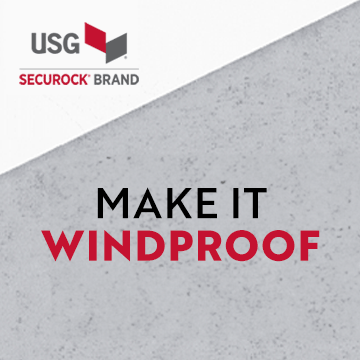PVC days limited?
« Back To Roofers TalkWas having a conversation with a rep today - Said most of the world is "PVC-free", cept for us Yanks more/less.....
TPO is the way.....
What say you guys?
Manville rep told me the other day that TPO was 45% of the entire market last year.
It's safe to say the day has come that low priice buys market share and the TPO storm is raging. If this stuff is as bad as the stuff of the 90's and early 2000's, those of us preaching other products are gonna have a lot of fun over the next 10 years.
Woody; There'already an alternative PVC in play, (uPVC? or something like that), in Europe, & more to come, I'm sure.
Back on topic; For the short term, simple economics/capitalism will sustain the use of PVC roofing in the USA, barring artificial components influx, (i.e. gov't intervention - i.e., recent solar energy phenomenon).
Off topic but still interesting. Sailing vocabulary referring to "Hot." The seam between the sheer strake and the strake below it had the name " the devil". In the old days it was always neccesary to pay the seams with hot pitch and since this was the longest seam in the boat, it was a very difficult job. Out of that came the old expression " There's the devil to pay" and in its original form the following was always added " and no pitch hot" B) :) :) B) Deep Down In Florida Where The Sun Shines Damn Near Every Day
I've asked two of the larger roofing companies around here to provide quotes to people for PVC and I asked them both if they were approved to install Fibertite. They both said they were and they both preferred to quote Durolast.
One of them does what I term grade B work. I don't mean that sarcastically. I'm using the old-school framework of A to F, so grade B is definitely what goes out to the public as "industry standard or better." I've done some grade B work myself, especially in the old cut-throat environment I had to come up through, so I'm not being a snot here when I use the term "grade B." Not bad, just not great.
The other does superior work as far as I have seen.
When I pressed them what I got was a very strong sense that they weren't heavily invested in long-range (twenty-plus yrs.) performance. What they seemed to resist was high minimum orders (500 sq.) and having to stock material for an indefinite period of time until another job "came up." In fairness to them, I would have to say that this environment has not been up to speed on single-ply systems, hung onto BUR for a very long time after it was long in decline in popularity elsewhere, and for whatever reason(s) they were unable or unwilling or uninterested in extensively educating either themselves or plan specifiers in general. That is why TPO is all the rage here now.
I found a temporary (quite legal) source for fasteners, someone going out of business, and snapped up all sorts of bulk screws while I could. While there, a man came in and was gorging on stainless steel fasteners of any type he could get his hands on at quite low prices. When I asked him what was the deal, he told me he owned a place on the coast in Mexico and "you can't get this stuff down there."
Maybe we are just experiencing a minor form of that here. Locals don't yet perceive the need. The picture Mike paints of the differences between sheets, and the reasons for that, is pretty conclusive to me. Very convincing. I have archived discussions from this site going back to at least 2006 concerning various membranes, and the experience and wisdom he has shared have been consistent and unstinting. Why self-professed, quality-minded, California architects who normally look down their noses at lack-luster material products and design, would be so gaga over TPO truly confounds me.
I put on a few hundred squares of Hardi material and lived to tell the tale despite the fact that they disappeared as a shingle material for apparently very good reasons. Our mild weather probably saved my bacon with that. I don't think they were pretty, but they never really tried to be slate or wood and they seemed like the only viable alternative on the market that would simply be what it was without a lot of pretense. I resisted the temptation to get involved with virtually every other facsimile wood/slate product and am grateful I did, watching in disgust over the years, decades really, as product after product flopped on its face. I think I'm witnessing another instance of that here, nothing quite so horrific as the wholesale failure of that Dual80 system of the late Sixties, but something quite extraordinary nonetheless. I am suspicious that as this phenomenon develops, thousands upon thousands of people are going to rue the day they opted for TPO.
I put on a ton of three and four-ply glass with rock or capsheet that lasted well over twenty years with no serious failures that I know of on any jobs that I controlled personally. Yeah, hot smells if you don't like the smell and yeah, it's dangerous to use if you don't take care with it or know what you're doing, but it's strong, very strong, it can be worked on, added to, subtracted from, maintained pretty easily, and it lasts.
We'll see.
I suspect everyone at one point or another gets tired of my Fibertite promoting, but since this conversation has revolved around PVC's I thought this might be a good time to try and just share some brief things.
1. Literally all catastrophic early PVC failures were with unreinforced Trocal, and some lesser failures (meaning 20 years or less) were with phthalate plasticized PVC. Generally, the thinner the membrane, the faster the failure.
2. To my knowledge, every PVC except one uses phthalate as the primary plasticizer, while a few (think cooley, carlisle, etc) use some KEE to improve on the basic mixture.
3. Only one uses KEE exclusively. That one began not as a roofing material, but as a chemical pond and landfill liner. It's Fibertite, born of the XR-5 membrane.
4. Whereas most companies struggle to make a sheet as cheaply as possible while lasting long enough to qualify as a viable roof product, Seaman Corp converted a product expected to do much more, and manage to do it at a price point that at least enables them to be in the ball park of other higher end products.
5. While it's often classified as PVC for simplicity sake, or because it's easy so architects can use it as a "competitive" number, etc... It's actually the only KEE sheet on the market. That doesn't mean it's the only sheet with KEE, but it's the only sheet with more than 50% of the compound being KEE. It's just the opposite of other products. Others use KEE to improve PVC. Fibertite uses PVC to make the KEE weldable.
6. KEE is unaffected by UV and the widest array of chemicals in the market.
7. I once had an opportunity to talk to the man in charge of the NRCA "roof farm" while attending the Ohio RCA convention. I asked him about thermoplastics. In his response he sang the praises of one particular product- (keep in mind he can't name products) "A polyester reinforced, weft-inserted weave, with 50% or more KEE ...". There was only one product on the market that met that description.
34. (that's an odd number, eh?) Thirty-Four. That's the number of years HRI has installed 36 mil Fibertite without a single failure due to membrane deterioration.
It really is different than what most of us are accustomed to from the roofing supply side of the industry.
Oh how sweet a word from Richard. If only it didn't so often take a decade to make the view clear. Low prices sure look good on paper.
I thought that article would make you cringe. It appears to be some sort of blogging from a "roofer". He certainly did a little more research than most, but it didn't say anything I haven't said in 12,000 times more words. I guess I just thought it was a lot easier to read. LOL
That link was informative, at least as reinforcement for some points that need explaining to people. Don't care for the way simple grammar mistakes creep into some of these things I read on the web, though. This one wasn't bad, but Crikey. Even "official" news articles show frequent and egregious lack of professional proofreading and editing. So if someone has put the bags away and is now engaged professionally in writing about roofing, the details in the writing craft must equate in some manner to the details in the former roofing craft. I've been around too long to get star-struck. A is congruent to B is congruent to C. The wave-length of the energy coming out of a person's head will tend to affect reading, writing, rithmetic, and craftsmanship and all in about the same manner. If a person wants to be read and yet can't take the time to edit, I don't want that person making me a sandwich or putting on my roof or fixing my car or advising me on which stocks to pick or passing legislation which could affect me in ways that person never dreamed of or teaching my children how to think or even driving a garbage truck down my street.
Am I world-weary or what??? Whew!
So I had a client call me for advice on a commercial job he needed reroofed. He trusts me because I have earned his trust.
He knows I don't do large work and he knows I have retired my kettle.
So he read me the four proposals and asked for my comments.
One guy specified TPO only. I told my client to go back and get a bid from him for PVC and this was the answer he got: "Oh, we can do PVC. Six of one, half a dozen of the other. There is absolutely no difference." It's not really hard to flush out the b.s.ers is it? They do that all on their own. Open mouth and let fly.
Before we practice what it's like to roll over in our graves, let's rather just give ourselves permission to ressurrect a quote from Richard Kaller. "Our competition makes us look good."
TomB,
Thanks. Yes, I've considered politicin', but no I doubt I ever do. Too much compromise for my taste.
As for lawyerin', Oh, I'da loved to been a trial lawyer, slingin' mud and befuddlin' 'em with BS, but alas, me and school just weren't the best of friends. My grandfather however is a past president of the Ohio BAR, so I reckon it runs in the veins. LOL
As for TPO taking over, I thought it already had, but it's harder to find with some Googlin' than I woulda thought. I did find one roofing company that published it's the top product at 36+% market share, which sounds consistent with data I believe a manufacturer showed me.
But how long it lasts, or what it's future holds, I dunno.
I hope you enjoyed your ride.
Egg, thanks for that link.
I am always listening to learn.
People are always looking at what we/society are not doing. Instead of what we have accomplished. We are always moving forward in society.
I recycled before it was popular. I also believe in using the products we have available to us. I sometimes make the decsion to use a product for financial reasons and not what the effect on the earth is. I use products for my pleasure and not based on need.
I believe one day we will dig up the landfills and mine all the products that are stored there.
Why would a company market a product in a country where it is not wanted? We market products that customers want.
It's Colorad'ns :laugh:
This is all good imo. Not the least of the to-the-good momentum it has supplied is it got me to actually start looking more closely.
I'm not finding fault with anything Andy put up there in his post, but just for the record, when Greenpeace takes on those Japanese factory-fishing boats out in the open water I don't consider them enviro-weenies. Factory fishing has decimated whole massive populations of aquatic life not the least of which was the Cod population. What's happening in the oceans is a major concern. But I digress...
After Googling, I did a free sign-up for a green building publication which was pretty darned informative. Mike has the jump on us because he has a background in chemistry and he is also thorough in his thinking and his approach to everything he engages in. I always enjoy his take on things. The Phthalate business was an eye-opener for me.
Anyway, in the interest of passing on information, it should be mentioned that land-fill liners are made of PVC because they are stable and one has to distinguish between disposal of PVC in landfill and disposal of PVC by incineration. Here is a quote from the article:
"...To the credit of the chlorine and PVC industries and government regulatory bodies, however, vast improvements have been made in manufacturing processes over the past twenty years, and many of the worst environmental offenders (DDT, dieldrin, and CFCs, for example) are already gone or on their way out. The residual vinyl chloride gas in PVC products has been reduced to (perhaps) insignificant levels, compared with two decades ago. The environmental and health risks associated with PVC are greatest at the two ends of its lifetime: during manufacturing and disposal (if by incineration). Most PVC products are safe to use and some offer significant durability, cost, and maintenance advantages compared with competing products. Concerning the costs of a chlorine phase-out both Greenpeace and the chlorine industry have exaggerated or blatantly misled the public. An often-quoted report by the Charles River Associates (CRA), which was commissioned by the Chlorine Institute, estimates the cost of eliminating chlorine to be $102 billion per year in higher product costs. A cursory look at these cost estimates shows that half of all chlorine use could be eliminated for $4 billion per year and 96% of the chlorine could be phased out for $18 billion per year. $53.6 billion of the $102 billion CRA total is attributed to the cost of eliminating chlorine from pharmaceuticals (representing just 1.3% of chlorine use), which no party has explicitly suggested. ...
Here is the link:https://www2.buildinggreen.com/article/should-we-phase-out-pvc?share-code=014d15282c652226517feb7bdb589c5b
The entire article is very well worth the read, especially for those of us who really don't have a grasp on the history of how any of these related products are actually produced or the efforts that have been made to control toxicity and improve product. Basic knowledge is something we all need and usually pays off in spades in all sorts of ways.
MikeH,
My first reaction was to ask if you've every considered politics or been to law school. Then I read my original post. Once again, I must apologize for my "short-hand speak" of sorts, (my wife reminds me of it all the time). I'm a "KISS" kind of guy, so I sometimes, (a little more often than not), speak in brevity. I also listen that way at times, sorting out what information I think is relevant/useful and dispelling all the other blather, (kind of a Charlie Brown/adult thing). It's helpful in day-to-day/fast-track business operations, so long as one can discern when it's applicable. Maybe I'm simply lazy. The older I get, the lazier/realizing that what we're doing down here really isn't that important, type attitude. All that being said - (There, I can do it too!)
What I was attempting to communicate was; With all the frenzy to eliminate PVC's of the past 20yrs, (i.e., countries in Europe, municipalities, gov't entities, in the USA & the rest of the world, as well as fortune 500 companies, end users of PVC, such as auto manufactures, roofing materials & institutions, succumbing to the pressure), and the simple fact we can reasonably ascertain that the production of PVC, use and disposal are harmful- More so than that of TPO we're told.
Then there's the hearsay, such as the fact I was told of a particular proponent, (roofing manufacturer),of PVC on one continent, yet a major proponent of TPO on another, simply due to gov't restrictions. Which following a bit of research seemed plausible. Two positives = Positive = (moe $).
This is not to encourage a debate on ones' opinion as to the merits or pitfalls of PVC or TPO, but rather as to the possibilities of TPO out-performing PVC in the sales/consumption arena, in the years to come.
& that my friends is all I have to say on the subject....I'm out for a bike-ride.
Mike H Said:If we could eliminate plastics altogether, it might not be a bad thing. I dont know if a good plastic exists, but wed give up an awful lot in the process getting rid of them.
While I much prefer the feel of metals and leather and natural fabrics, which is worse, the air pollution and landscape destruction that goes with steel and aluminum production, or putting plastic in our landfills and littering our waters and landscapes? I dunno, honestly. We were destroying the environment long before polymer science took off.
If we were to really dig deep into the heart of the question, when a person considers that almost all of our polymers are oil derivatives, and the asphalt of our forefathers is a thing of past due to the vast improvements in refinery capability to separate out the chemicals used in these polymers... could it be that the old asphalt grandpa used, and the asphalt we pave our roads with, is just as bad for our environment as PVC? Maybe.!? How much more green house gas and damage would we do if we only used glass bottles, returned them all, washed them before using again? How much more would they cost? Maybe we should use cowhide water bags rubbed with seal blubber. How much more methane would be produced from the additional cows, and how many more trees would be cut to open the fields for hay and grain to feed them?
Maybe in an effort to support the growing human population, plastics offer the lesser of all available evils when looking at the big picture. ? . ? Again, I dunno.
The truth is that I dont know all of the We all knows... in your last post, and I dont know if you get your info from PETA, the NFIB, the FFA, the NRA or Grandmammies Anonymous. But I was willing to listen.
Tough discussion. I've often wondered the same with all the talk about how evil plastics are. Damn near every product we install isn't "healthy" per say. However, what's the alternative..??
It's an argument that can't ever be won imo. Chew up the natural resources.... or live with plastic. I wonder how much a car would cost without any plastic in it..? Any plastic in the Prius...? Just curious....
While wood can make a fine roof on a steep slope, doesn't seem to be worth a damn on flat roofs. Seems homeowners insurance is a little pricey with wood shingles too..
Typically, from the conversations I've been in, the enviro-weenies tend to focus on one glaring negative of a product (ie: toxicity), while ignoring all of the other aspects of the alternative. Manufacturing, transport, removal, disposal, etc.
Why the hard on for PVC...? Is a typical pvc sheet more toxic, or dangerous to the world than epdm, tpo, or any of the other products we waterproof with ..? I don't think so, not when all the factors are considered. Granted, Im no chemical engineer. Im just a roofer.
However, taking labor issues out of the equation..... I've seen more TPO failures than any other roofing material for low slope applications in the last 20yrs. It's not even close in my experience. I've seen plenty that were 7-8yrs old as well. On the flip, I've seen with my own eyes, & walked on with my own feet, multiple roofs that were 20+yrs old, epdm, pvc, modified, & even some BUR.
I've personally welded new pvc to 15yr old pvc with no problems, & yet...couldn't weld a patch on a 3yr old TPO roof. In my mind anyways, a good pvc, is a considerably better product than any TPO I've seen.
My question is, what's better for everyone in the big picture. Putting on one pvc roof that lasts 20-30yrs & being content with all the factors involved, or putting on 3 TPO roofs in the same time frame. From a cost perspective, it's a no brainer. Without having a degree in the environment, I'm still betting that with all things considered, the pvc solution is going to be less expensive, with much less environmental impact.
I've always looked at TPO as a low cost, temporary solution. The only reason the Al Gores of the world support it in my opinion, much like everything else they support..... because they have a financial interest in it.
Egg, well said. I've been shaking some singly ply in to my roofing menu for about five years, and I've thought about going after more. I like to have all the answers, but thats an endless quest.
Mike: Thanks for the input.
I'd regret seeing this thread disintegrate because I'm finding information in it that is valuable even though I don't do singleply systems myself. Here's a quote from Tom:
"I was told the other day that a particular major roofing manufacture was a promoter of PVC on one particular continent, yet, opposed it on another..."
That would be marketing at work, or, translated, allowing marketing goals to supercede ethical considerations. I could say asphalt shingles are a good thing and keep my fingers crossed while avoiding thinking about the fact they don't come from a renewable source and have to be changed out every twenty or thirty years. I could say cedar shingles are a good thing and keep my fingers crossed while avoiding thinking about all the clear-cut slopes that aren't producing new healthy forest ecosystems anytime soon. I love cedar shakes and shingles. I could keep my fingers crossed while trying not to think of how they, too, have to be changed out every generation.
I always find it better to tell the truth to clients and others, even if it means that a clear answer is problemmatic. "Marketing" as I interpret it here means saying whatever you think will put you in a better light and increase sales, offering mutually exclusive opinions in different markets, or having no belief whatsoever and pretending to one or more of them as need dictates.
In everyday language that would be called hypocrisy or speaking with a forked tongue. Marketing in my opinion isn't inherently bad, but it's a little dangerous. Actually, anytime we manipulate the truth we're taking a moral risk. "Nice contradiction between fact and fact will make the whole read human and exact."
I'm enjoying the discussion from the sidelines, though. Don't quit now.
























